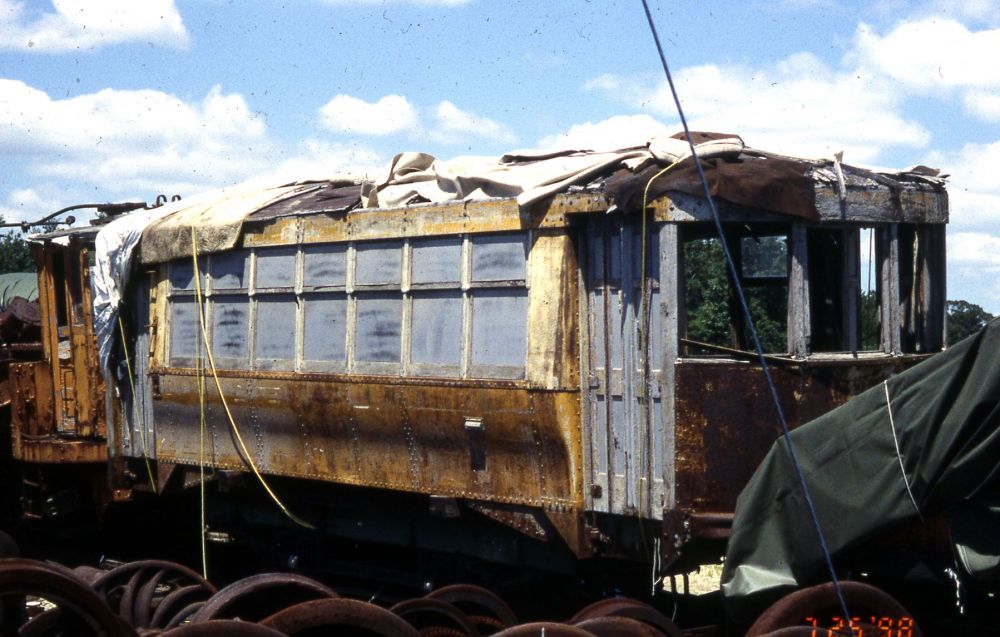
Norman Down
- Builder
- Cincinnati Car Co.
- Description
- Curved-side
- Secondary Use
- Residence and drive-in
- Type
- City and Suburban Streetcars
- Year
- 1925
- Retired from Service
- 1947
- Acquired by the Museum
- 1992
- Note
- As of April 2017, No. 410 was stored under a tarp at Fairview carbarn.
- Fund
- 720
Knoxville Power & Light Co. 410
From Knoxville, Tennessee
History
Knoxville’s transit system operated under the name Knoxville Power & Light starting in 1921 when it became a subsidiary of National Power & Light. In 1930, the name changed to Tennessee Public Service Co., and in 1938, it became Knoxville Transit Lines. The last Knoxville streetcars ran in 1947.
Cincinnati Car Co. designed its distinctive curved-side cars in the 1920s as a light-weight, power saving model – a forerunner of later streamlined cars. A reverse curve in the lower side panel gave the cars greater structural strength. Instead of the floor, the side plates and side sills bore most of the weight load. Longitudinal floor supports were no longer needed which made the cars lighter than conventional cars. Aluminum castings where applicable further reduced weight. Most of Cincinnati Car’s curved-side streetcars were double truck cars, but Knoxville Power & Light acquired a fleet of single truck curved-sides from Cincinnati Car. Knoxville’s last group of these trolleys was 16 single truck curved-side cars acquired in 1925, Nos. 408 - 423. These cars had the Knoxville feature of a mailbox on the side of the car so that one could post a letter on a passing streetcar. Knoxville’s curved-sides had plush seats – unusual for city cars of that era. The curved-sides continued operating until Knoxville streetcar service ended in 1947.
After retirement in 1947, the body of No. 410 survived as a residence and a fast food drive-in at Shelby Hollow, TN. Its owner, Mrs. Mardell Brewer of Tazewell, TN donated No. 410 to Seashore in 1992. Seashore purchased some parts from the owner of another Knoxville streetcar body at New Tazewell, TN. The museum has acquired a set of appropriate journal boxes, but will need to build a Cincinnati Birney truck. The vehicle number of this was car somewhat uncertain; Seashore originally identified this car as No. 423.
Technical Information
- Seats: 28
- Control: K-63G
- Brakes: SME
- Compressor: CP-27
Trucks
- Number: 1
- Manufacturer: Cincinnati
- Model: H
Motor
- Number: 2
- Manufacturer: General Electric
- Model: 265
Weight and Dimensions
- Length: 28’ 8.00"
- Width: 7’ 9.00"
- Height: 10’ 4.00"
© 1998 - 2025 New England Electric Railway Historical Society. All Rights Reserved.